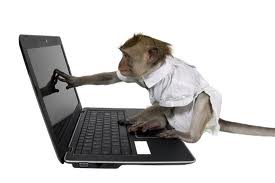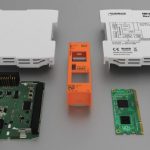The Turing Test, developed by Alan Turing is quite important within the realm of computer science and artificial intelligence. The test as it is perceived today aims to determine the ability of machines to display intelligent behavior. The test is accomplished with simple questions and responses, requiring multiple parties to participate. If you’re interested in learning more about the Turing Test, it’s important to understand what Turing produced himself and how the test is interpreted and utilized today.
Alan Turing
Alan Turing was a famous English mathematician, code-breaker during WWII and a well-known computer scientist, from the earliest days of computer science. During his time at Cambridge he developed a proof known as the Turing Machine which states that automated machines are incapable of solving all mathematical problems. This proof is known as the Turing Machine today and serves as a foundation of computer science and theory. After his time spent fighting against Nazi intelligence during the war, he went on to work for the British government, aiming to develop a machine which was capable of intelligent computation. It was during this time that he theorized the Turing Test and its implications for artificial intelligence.
The Original Turing Test
Turing’s original test was a bit different from the way the Turing Test is understood today. In the original test, a man and a woman sat in a separate room from a third party. The man must convince the third party he is the woman, while the woman attempts to communicate her real identity. This is all done by writing and electronic communication. At some point during the test, the man is replaced by a machine. If the machine can fool the third party as well, then it is said to have passed the Turing Test.
The Turing Test Today
Today the Turing Test still exists to measure machine intelligence, but it is understood a bit differently, Rather than first placing one human against another, the test today starts by immediately putting a machine in one room and a person in another, leading to an outright competition solely between the human and computer. The goal of the test remains the same, with the machine attempting to convince a third party it is the real human, by means of electronic communication.
Objections to the Turing Test
Many objections to the Turing Test have been voiced throughout the years. There are purely theological objections, stating that one cannot make a truly sentient or intelligent machine as a soul is required for intelligence and only living things possess souls. Mathematical objections exist based upon logical constraints which could make certain questions exist which a machine is incapable of answering, no matter the level of artificial intelligence. A famous objection comes from Ada Lovelace in her notes on the Analytical Engine, stating that intelligent machines cannot even exist as a machine can never produce something new or surprising.
Of course, we won’t know if the Turing Test works for some time to come. At this point, true artificial intelligence is still many years in the making. Until then, theories about the Turing Test are sure to continue to circulate and new variations are sure to develop.
Byline
This piece was composed by Drake Kingston, a freelance writer who focuses on computers, gadgets, gadget accessories, cell phones and other related topics.








